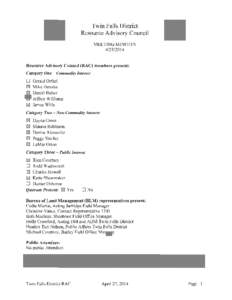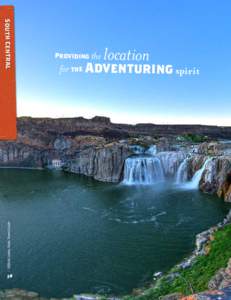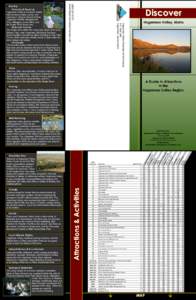<--- Back to Details
| First Page | Document Content | |
|---|---|---|
 Date: 2015-01-03 07:28:58Bureau of Land Management Conservation in the United States United States Department of the Interior Wildland fire suppression Hagerman Fossil Beds National Monument Hagerman Horse Jarbidge River Idaho Geography of the United States United States |
Add to Reading List |
 | | Official Idaho State Travel Guide South Central 58 Providing theDocID: IK5U - View Document |
![Twin Falls District Resource Advisory Council MEETING MINUTES[removed]Resource Advisory Council (RAC) members present: Twin Falls District Resource Advisory Council MEETING MINUTES[removed]Resource Advisory Council (RAC) members present:](https://www.pdfsearch.io/img/fbf8dcf38308bbf02146d8212b5ad621.jpg) | Twin Falls District Resource Advisory Council MEETING MINUTES[removed]Resource Advisory Council (RAC) members present:DocID: Ic8w - View Document |
 | National Park Service U. S. Department of the Interior Cultural Resources Pacific West Region 2008DocID: EJEl - View Document |
![Twin Falls District Resource Advisory Council MEETING MINUTES[removed]Resource Advisory Council (RAC) members present: Twin Falls District Resource Advisory Council MEETING MINUTES[removed]Resource Advisory Council (RAC) members present:](https://www.pdfsearch.io/img/6f9e40393f79ad7f36e2968e57c208cf.jpg) | Twin Falls District Resource Advisory Council MEETING MINUTES[removed]Resource Advisory Council (RAC) members present:DocID: Bepa - View Document |
 | Hagerman Valley shelters plentiful bird populations. The fowl are attracted by availability of abundant water, vegetation cover, and nesting habitat, The area is particularly popular with ducks, and geese which seek outDocID: AvJN - View Document |
 Twin Falls District Resource Advisory Council MEETING MINUTES[removed]Resource Advisory Council (RAC) members present:
Twin Falls District Resource Advisory Council MEETING MINUTES[removed]Resource Advisory Council (RAC) members present: